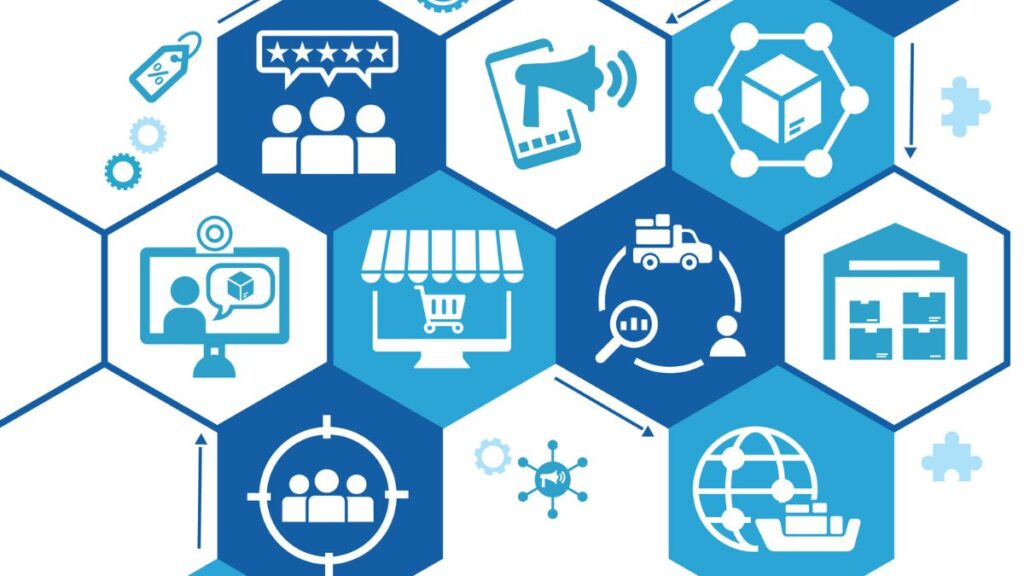The ultimate holiday season marketing action plan

Our recent survey of 1,500+ marketers across Australia, the UK and the USA, has given us real insight into how marketers will be prioritizing time, spend, and success for the rest of 2025 and beyond. We’ve turned that data into one handy action plan so you can follow the trends – but smarter, louder, and better.
We dug deep into the secret lives of marketing teams to identify the trends, tools, and tactics that are shaping the final stretch of the year. This isn’t about copying the competition, it’s about outsmarting them.
Step 1: Lock in your campaign and content calendar
Before you get stuck into specific tactics, think about the bigger picture. Summer is almost over and the final quarter of the year is packed with marketing potential.
| Month | Key dates & moments |
| October | Halloween, Diwali |
| November | Singles Day (11/11), Black Friday, Cyber Monday |
| December | Christmas, Hanukkah, Boxing Day, New Year’s Eve |
Actions:
- Build campaigns around these dates now and start sending at least two weeks ahead of each key date so you can include multiple touch points across multiple channels
- Focus on an email plan first for general updates and countdown/coming soon messaging to warm your audience up for the launch of campaigns and promotions. (39% of marketers say email platforms are one tool they can’t live without, and 65.9% of consumers are happy to share their email address with brands) then bring in WhatsApp and SMS messaging for more personalized in-the-moment contact when the time is right and the content is relevant
- Don’t just sell. Educate, entertain, and build trust with content that shows your audience who you are as a brand. If you’re running promotional campaigns around the above dates and holidays, create some supporting behind the scenes and culture content on the same theme for your socials too. Check out Dotdigital’s LinkedIn, TikTok and Instagram for some inspiration
Step 2: Work smarter with AI – while keeping the human touch
AI is now so prominent in the marketing industry that 80% of marketers believe their organization would replace human employees with AI tools if they could, and 13% of marketers fear they could be replaced by AI within the next 12 months.
While the fear itself is very real, the practicalities of replacing marketers with AI tools are still a long way off in most areas. And there is no denying that AI can quickly and easily help us better understand audience wants and needs, create first drafts of some content pieces, and give us a kick up the creativity when coffee alone isn’t doing the trick. But all of this is still completely reliant on a talented human marketer knowing exactly what to ask the AI in the first place and how to fact check, edit, and refine the results.
We’ve put together a handy AI checklist to help you create the perfect AI prompt and editing process for refining AI-generated copy in your brand tone of voice.
Actions:
- Use AI to help with content outlines, audience insights, and quick testing. All of which falls in the category of enhancing marketing capabilities and doesn’t even come close to replacing them
- Keep a human and on-brand tone of voice at the front and center of all your copy and creatives. Some good questions to ask yourself as an authenticity test are:
When I read this out loud does it sound like a normal conversation, or a sales pitch? If it’s the later – it needs another edit
Are there and words or sentences in here that I would never use? If yes, it’s time for some switching - If you’re in a senior role, talk openly with junior staff abut the realities of AI within marketing. Confidence trickles down and we don’t have to believe everything the tech-bros are saying on LinkedIn!
Our AI playbook has lots more advice and tips.
Step 3: Double down on email (and no, we’re not bias, we love all marketing channels equally)
Email is thriving. Especially when it’s personal, automated, and relevant. The more relevant you make your email messaging, the more frequently your audience will be happy to hear from you.
Our 2025 Global Benchmark Report revealed that November is the busiest month for email sends, up 22% compared to October. The holiday season is big business and what were once region-specific holidays, such as China’s Singles’ Day and America’s Black Friday, are now celebrated around the globe. With inboxes busier than ever, segmentation, personalization, and compelling subject lines are essential.
Action:
- Segment like a pro. Don’t just batch and blast, tweak and tailor for each audience group
- Use email to build anticipation for holiday campaigns, adding in personalized images, videos, product recommendations based on previous buyer behavior, personal coupons and discount codes
- Create a preference center that allows your audience to opt of campaigns that are focused on holidays they may not celebrate or feel sensitive about – and then think about what communication you can send the ‘opted out’ cohort instead
- Use AI to help with subject line writing and testing, but always review and edit where needed to retain heart and authenticity
Step 4: Build real relationships on your social channels
37% of Gen Z marketers told us that social media is their top priority for the next 12 months. And from an audience perspective you’ll find every generation hanging out on at least one social platform from Facebook (Baby Boomers, Gen X and elder millennials) to Instagram (Millennials and elder Gen Zs) to TikTok (younger millennials and GenZ) and of course LinkedIn, for basically anyone with a corporate-ish job. Social media platforms are the perfect place to build brand trust. And where your audience decides if they like you enough to buy from you.
Action:
- Show up consistently. Not just with promos, but with personality
- Use TikTok shops and Instagram reels to showcase products in action
- Engage. Reply. Be human. Social is a two-way street
- Work with social media influencers (our friends at Social Snowball can help with this if you work with Shopify) and lean in to user generated content (UGC) for reviews and product recommendations
Step 5: Balance data and creativity
49% of marketers say they value data and creativity equally when it comes to making marketing decisions. If you want to get more granular, Gen Z marketers lean slightly more toward the creative, and Gen X leans toward data. Ultimately – you need both. But you already know that!
Action:
- Use data to guide decisions, not dictate them. If you understand your audience well enough to know that your amazing campaign idea will resonate with them, it’s absolutely worth trying it – even if you don’t have the data to prove you should. Marketing instinct and experience is a form of data in itself
- Let creative ideas lead, then validate with performance metrics. Especially if your department is measured on ROI, ROAS, or sales. These are the numbers the wider business will want to see
- Don’t get stuck in analysis paralysis, apply the TIMITI tactic. Try it, measure it, tweak it – then try it again!
Step 6: Fix what’s broken (tools, data, collaboration)
We won’t sugarcoat this, we’ll let the survey results do the talking:
- 16% of marketers say they don’t have the right tools to do their job well
- Only 14% of marketers say they have no issues with data
- According to the majority of marketing teams – IT, HR, and finance are the hardest departments to work with. Yet these are the teams who are often responsible for, or influencers of, marketing headcount, budget and tech. Oh dear.
Action:
- Audit your tech-stack. Make a list of what tools you have, what tools you’re using, what tools you’re using well, and how much its all costing. Is anything slowing you down that you could replace or simplify? Does the team need training to make better use of what’s in place? Are you happy with all your providers?
- Get your data house in order before Cyber Week. Chat with your IT team about what migrating to new platforms could look like if your current ones aren’t doing what you need. Openly share the data challenges you’re facing and see if other business functions can help. People want to feel valued, heard, and given the opportunity to share their expertise, this might be all it takes to solve that blocker that’s been in your way for months
- Build bridges with tricky teams. Ask for one small win, even if that’s just a meeting to start the discussion. Offer something back in return. Then build from there
Step 7: Prioritize your brand
Brand awareness is the #1 priority for marketers over the next 12 months. And for good reason. Performance marketing is great, but costs are continuously getting higher (especially across Meta platforms) and the channel is getting more saturated every day. Brand campaigns build trust, loyalty, and long-term growth. And they no longer have to break the bank.
Action:
- Invest in video. It’s the most engaging format across platforms. Investing doesn’t always require more budget, it could just mean freeing up a team member to do a training course or letting your social media manager experiment with new formats
- Use generative engine optimization (GEO) to make your brand discoverable in AI-powered search. This requires structuring some landing pages in an ‘answer first’ format and think about structuring content in a way that aligns with AI search queries
- Tell stories. Real ones. From real people. And don’t be shy about showing off your team and your company culture. People buy from brands they like – and they recommend brands they love!
Final thought: stay positive – you’ve got this!
83% of marketers believe they’ll hit their goals this year. That’s not blind hope, it’s confidence backed by action and planning. You’ve got the tools (or you know what’s missing), the insights, and the drive. So take this plan, tweak it for your team, and absolutely smash the rest of 2025.



